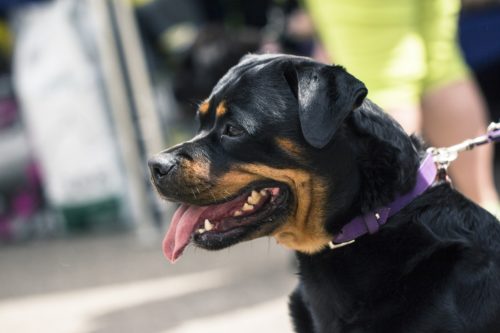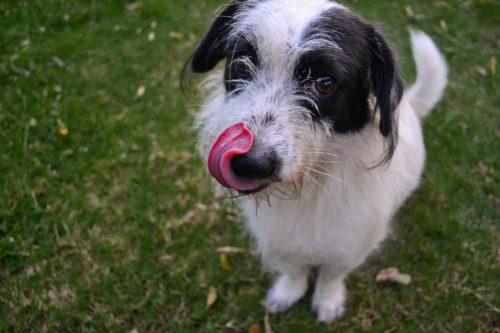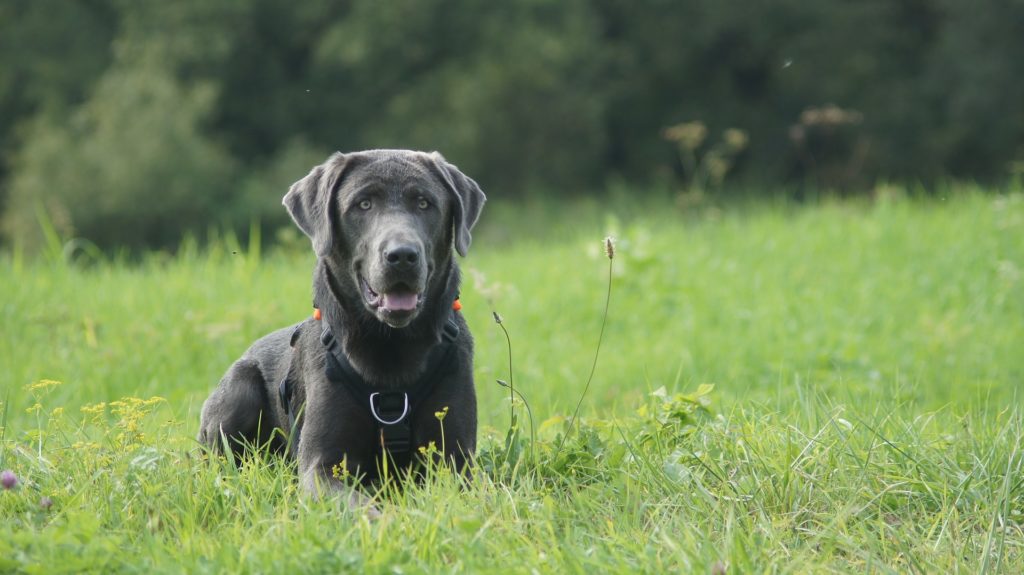Your dog is in distress, and you don’t know why. They’re barking, pacing, or being destructive every time you leave the house or whenever you turn on the vacuum cleaner, but why? They seem physically healthy and their routine hasn’t changed, so why all of a sudden are they beginning to act differently?
You notice that these strange behaviors are being brought on by specific triggers. If you can pinpoint the exact source of when your dog develops these odd actions, it could mean they are suffering from some form of anxiety.
Just like humans, dogs can suffer the same perils of anxiety, but unfortunately for them, they are unable to communicate their distress verbally. So how else are they supposed to signal to their guardians that they are feeling panicked?
You notice that they are acting in a strange manner, but the signs seem insignificant, and you don’t raise much concern. But did you know that dogs who are looking for a way to reveal their internal conflict begin to develop behavioral issues or strange actions in order to signal to their owner that something is wrong?
Everyone has seen it. A dog enters into a barking frenzy as soon as their owner leaves the house, or maybe they decide to chew up the living room couch and wreak havoc on the home decor once they are finally alone. Your dog isn’t maliciously trying to upset you or is not trained enough to know right from wrong, they a suffering from a more significant issue and need your help.
You know your dog, and you know when something isn’t right. If all of a sudden they start to act strange or in a way that is out of their character, take notice. They are crying for help. Anxiety in dogs is a prevalent problem and can easily be fixed once the source of this issue has been identified.
This article will cover everything you need to know about dog anxiety and will help you learn how to calm anxiety in dogs when the issues begin to surface. If you truly love your dog, you would do anything to make them feel better during a time of distress. By following these helpful tips below, you will be able to help your pet feel more comfortable and find solutions that can help them cope with their anxiety.
What is Canine Anxiety?

Dogs can have fears, phobias, or anxieties from common triggers. Depression in dogs also exists, but the telling signs are slightly different than a dog suffering from anxiety. Just like humans, dogs may experience a change in behavior when they feel uncomfortable or are frightened by another external factor they are not familiar with.
When it comes to anxiety, a dog may develop behavioral issues or bodily reactions from a fear of potential danger. Whether these dangers are unknown or imagined, dogs can face anxiety and experience many changes in behavior caused by their underlying stress.
As most dog owners have already experienced, separation anxiety in dogs is the most prominent culprit within the anxiety category. Separation anxiety is brought on when a dog is left alone for an extended period of time. Most dogs will show signs of distress as soon as their owner is getting ready to leave or when the owner walks out the door. No matter when it starts, a dog suffering from separation anxiety will be extremely fearful whenever their guardian is not around.
What Causes Anxiety in Dogs?
There is no one single cause for anxiety in dogs. Each animal is unique and has different likes, dislikes, and fears. So what exactly causes this distress and emotional instability?
Below are some of the main contributors to dog anxiety:
- Pain or illness: If a dog is in pain or suffering from a health condition, they may be prone to developing some form of fear or anxiety. An animal may associate their pain and suffering with an external trigger that causes them to develop a phobia around that subject. Think about it, dogs who have some illness that causes pain are unable to understand why they are hurting or what they can do to get rid of it. Toxins in the blood can also cause anxiety and a number of health issues if left untreated.
- Age: An elderly dog may be prone to developing some form of anxiety. This is because they are experiencing changes within their nervous system which can cause them to react differently than before. Older dogs are also more susceptible to disease or health problems which aligns with the first bullet point listed above.
- Separation Anxiety: As mentioned before, separation anxiety is a major concern for any canine – regardless of age or breed. This is brought on when the dog becomes fearful and panicked as soon as they are left alone. Separation anxiety is quite common in animals who have been previously abandoned, lost a loved one, or have had multiple owners.
- Phobias: An external trigger or situation is a common cause of anxiety in dogs. Each dog is unique and can have different phobias that trigger this emotional state. Common dog phobias include fireworks, being restricted in a crate, or even being frightened by the vacuum.
- Noise Anxiety: Noise anxiety can tie into phobias. Fear of fireworks or the vacuum can be caused by the loud noises they create.
- Traumatic Experiences: Dogs can become extremely anxious in unfamiliar situations or new surroundings. This is most common when a dog has experienced a terrible situation at some point in their life. This memory will cause them to be fearful of new places, people, or things.
- Deprived Early in Life: If a dog has not been socialized or has been contained in a confined space without environmental exposure, they may develop anxiety as well. That’s why many veterinarians will recommend socializing your puppy as early on as possible.
What Are the Signs of Dog Anxiety?
Some signs are subtle while others are not. Dog anxiety symptoms will depend on the severity and the underlying cause of their issue. The main signs that your dog has anxiety include:
- Withdrawal
- Shaking
- Panting
- Urination in the house
- Destructive behavior
- Licking or biting themselves
- Trying to escape
- Diarrhea
- Odd behavior
As you can see, panting or shaking are both very generalized symptoms which means diagnosing anxiety in your dog can be a difficult challenge. That’s why you have to analyze the situation when these behaviors arise and see what may be causing your dog to react a certain way.
Are they acting reclusive every time strangers are over? Do they bark excessively every time you walk out the door? These are the questions you should be asking yourself to figure out if your dog is feeling panicked and what can be triggering this anxiety to the surface.
Once you notice any change in behavior, make sure to take note and provide this information to your veterinarian. This will be a key component that will help your vet when diagnosing their underlying issue. Also be sure to mention any possible triggers that you believe to be causing these problems.
How to Help Anxiety in Dogs

As mentioned before, there are many different types of anxiety, and each form will require a different plan of attack. The best thing you can do is to talk to your veterinarian to see which treatment method would work best for your dog.
If your pet is suffering from some illness or infection, it is critical that they seek medical treatment to cure the underlying issue. Even if your dog is showcasing minor behavioral changes, it is still essential that you take them to the vet for a thorough examination. While external triggers cause most cases of anxiety in dogs, more severe conditions may be the actual source, which will require immediate medical attention.
Prescription Medications
In severe cases, a vet may prescribe anti-anxiety medication to calm your dog. However, keep in mind that drugs should only be used when everything else fails. In extreme cases, dogs may have to be hospitalized until the medication kicks in or until they are in stable condition. As said before, if the dog is suffering from a more severe health condition, then this should be the primary focus of their treatment plan.
Daily Exercise
Anxiety can form when a dog becomes bored or under-stimulated. If they are being locked in the house all day with nothing to do, you better believe they will develop unfavorable behavior traits just to keep themselves entertained. To avoid this from happening, make sure your dog is getting an adequate amount of exercise on a daily basis.
Not only will this tire them out, but it is also a time for the dog to bond with their owner. The companionship provided through playtime and exercise is an essential factor to every healthy relationship between a dog and owner.
Keeping it cool
Dogs are smarter than you think. They can sense your body language and tell what you are feeling. If your dog is having an episode of anxiety and you are stressed trying to calm them, this will only further their symptoms and continue this vicious cycle. If your dog is acting up, the best thing you can do is to stay both calm and assertive. You don’t need to be overly comforting or completely firm, try to find something in the middle that will calm your pup down back to their normal state.
Play Soothing Music
Just like with humans, music can have a major impact on a dog’s emotional state. Creating a calm and serene environment while your dog is feeling anxious or panicked may be an easy way to soothe their racing minds. Some owners will even leave on the television or radio so the dog feels like they are not alone.
Natural Remedies

There are a number of natural remedies on the market that are meant to help calm anxiety in both humans and canines. Whether it be herbal supplements or homeopathic treatments, talk to your vet to see what’s safe for your dog to take and what they recommend. Aromatherapy is another natural remedy that has proven to alleviate some stresses your dog may be experiencing.
Distraction
The best thing you can do if your dog is experiencing anxiety from a particular trigger is to get them distracted by something else. If the source is fireworks or a trip to the vet, try to make the experience more enjoyable and find something that can entertain them. Whether it’s their favorite toy or a little extra affection, there are many sources of distraction that can be your winning ticket to an anxiety-free pup.
Training
Training is your best friend when it comes to calming your dog. Once a trigger has upset them, try using behavioral training practices to have them act differently. Even though it may be difficult for them to separate their fear from reality at first, if they are focused on their training, they will not only be distracted but also be in a calmer state as well. Once they have been conditioned to behave favorably, make sure to reward this desired behavior with praise or treats.
If your dog is suffering from anxiety, do whatever you can to make them feel comfortable. Once you find the trigger that is causing the issue, you can then create a treatment plan with your veterinarian. It’s not always easy knowing how to calm an anxious dog, especially if the source of their problem is still unknown.
As a general rule of thumb, you should always take your dog in for their regular check-ups and inform your vet of any changes in behavior or health that you’ve been noticing with your furry companion. Whether the symptoms are big or small, they all indicate an issue that needs to be addressed.
You are the only voice your dog has, they depend on you for both their physical and mental well-being. If your dog is suffering from any form anxiety, talk to your vet about potential anxiety treatment plans. With a little guidance and tips, your dog’s anxiety symptoms can be reduced significantly if not entirely overcome.




